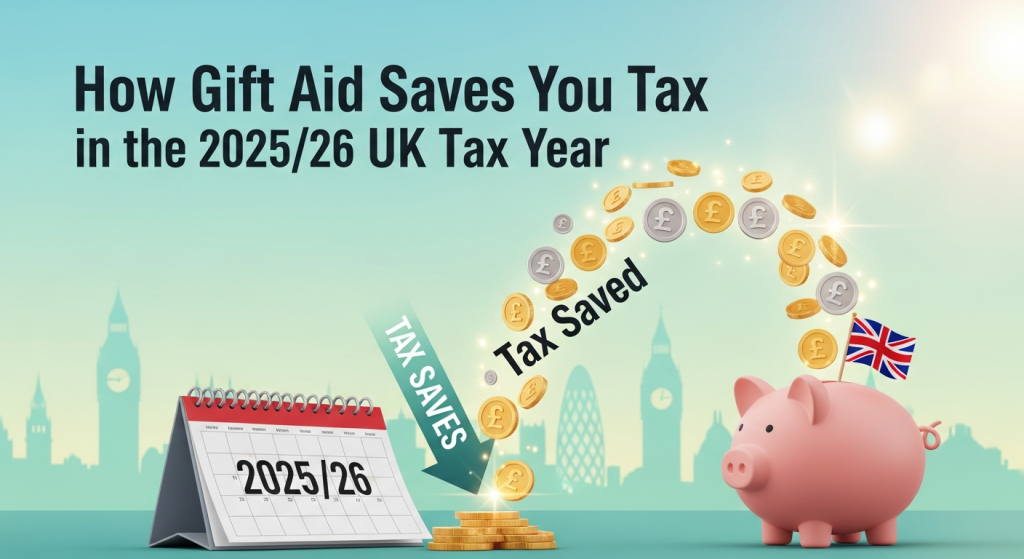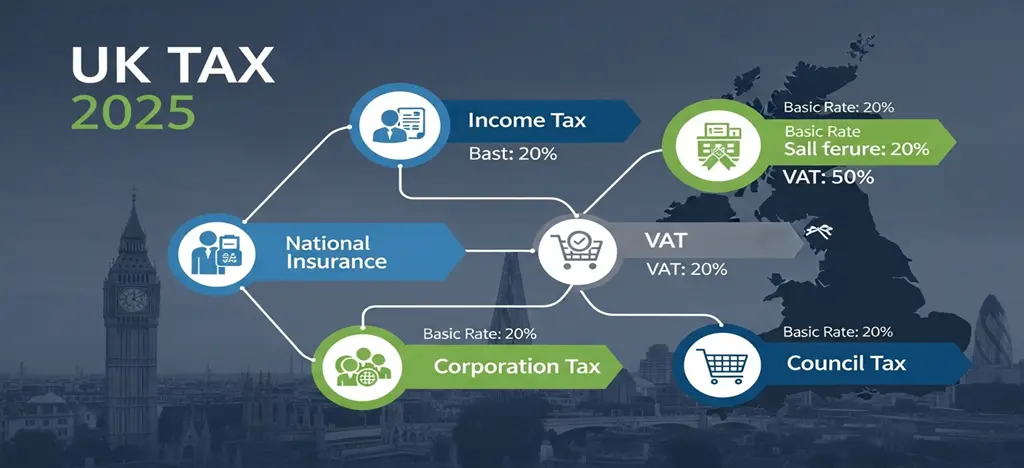As the 2025/26 tax year kicks off on 6 April 2025, UK taxpayers have a golden opportunity to blend philanthropy with smart financial planning. With frozen tax thresholds and rising living costs, every pound counts. Enter Gift Aid—HMRC’s ingenious scheme that lets you donate to charity while reclaiming tax relief, effectively stretching your generosity further.
Whether you’re a basic-rate taxpayer donating £10 to a local food bank or a higher-rate earner supporting global causes, Gift Aid turns your gift into a tax-saving powerhouse. In this guide, we’ll unpack how it works, its benefits, and tips to maximize your impact without the hassle.
What Is Gift Aid, and How Does It Work?
Gift Aid is a simple declaration you make when donating to UK-registered charities or Community Amateur Sports Clubs (CASCs). By opting in, you’re telling the charity they can reclaim the basic-rate tax (20%) you’ve already paid on your donation—boosting its value by 25% at no extra cost to you. For instance, if you give £100, the charity receives £125 because they claim back £25 from HMRC. This applies to cash donations, standing orders, or even entry fees for charity events, as long as you pay UK tax and the gift is voluntary.
The magic happens behind the scenes: you donate the net amount (after basic-rate tax), and HMRC reimburses the charity directly. No forms for the charity to chase you with—just tick the Gift Aid box on their donation page or provide a one-time declaration. Crucially, you must have paid at least as much income tax and/or Capital Gains Tax in the year as the total relief claimed across all charities. For 2025/26, with the personal allowance at £12,570 and the basic rate band at £37,700, most working donors qualify easily.
The Tax Benefits: More Bang for Your Charitable Buck
Gift Aid isn’t just feel-good—it’s a tax efficiency hack. For basic-rate taxpayers (20%), the perk is indirect: your £100 donation becomes £125 for the cause, saving the charity time and money on fundraising. But higher and additional-rate payers (40% and 45%) unlock extra relief on top. You can claim the difference between your rate and the basic 20% via Self Assessment, reducing your tax bill or boosting your refund.
Take Sarah, a 40% taxpayer donating £1,000 in 2025/26. The charity gets £1,250 (£1,000 + £250 basic relief). Sarah then claims 20% extra relief (£200) on her return—effectively costing her just £800 out-of-pocket while the charity nets £1,250. That’s a 25% saving on her net cost! For additional-rate filers, it’s even sweeter: a £1,000 donation costs £550 net after full 45% relief, with the charity still receiving £1,250.
This relief extends to your adjusted net income, potentially preserving personal allowances (e.g., if you’re over £100,000) or minimizing the High Income Child Benefit Charge. Plus, donations reduce your taxable income for benefits like the Marriage Allowance. In Scotland, with rates from 19% to 48%, the process mirrors England’s—claim extra if you’re in the 21%+ bands. Overall, Gift Aid could save you £200–£1,000+ annually, depending on your bracket and giving level, while amplifying your impact—a win-win for wallet and conscience.
Tips to Claim Gift Aid Seamlessly in 2025/26
Getting started is straightforward, but timing matters. Donations from 6 April 2025 qualify for the 2025/26 year, and you can include them in your Self Assessment return filed by 31 January 2027. Self-employed? Report via SA100 box TR4, grossing up amounts. PAYE workers: Charities notify HMRC, adjusting your tax code automatically for basic relief; claim higher-rate extras on your return or via form P810.
Pro tips:
- Track everything: Keep records of net donations and declarations for six years—apps like Charitable or JustGiving simplify this.
- One declaration fits all: A single form covers multiple charities, but update if your tax status changes.
- Sponsored events: Donations from challenges qualify if you declare Gift Aid upfront.
- Avoid pitfalls: Skip if receiving significant benefits, and exclude non-UK charities post-5 April 2024.
For big givers, consider payroll giving (up to 45% relief pre-tax) or trusts for ultra-high-net-worth planning. And remember, you can “bring forward” claims: Donations up to your filing date count for the prior year if amending.
Why Gift Aid Matters Now More Than Ever
In 2025/26, with inflation biting and charities facing funding squeezes, Gift Aid empowers you to do more with less. It’s estimated to add £1.3 billion yearly to the sector—your part could multiply that impact while trimming your tax. Start small: Next time you donate, opt in. Log into your Personal Tax Account on GOV.UK to monitor reliefs, and consult a tax advisor for personalized tweaks.
Embrace giving that gives back—your future self will thank you. Ready to gift smarter? Head to a charity site today.








